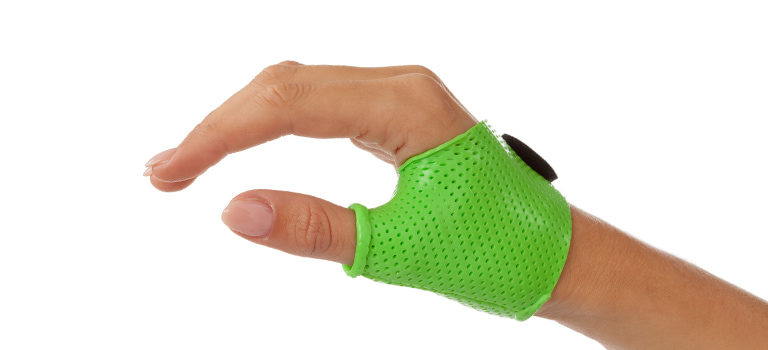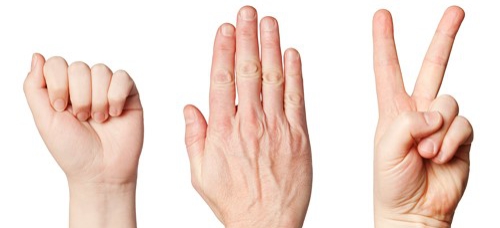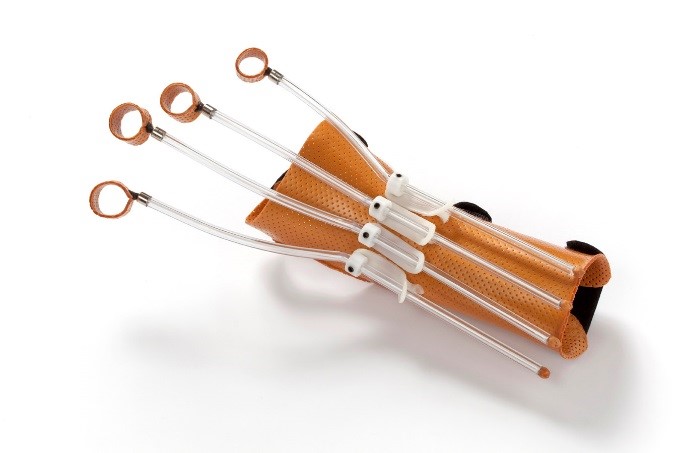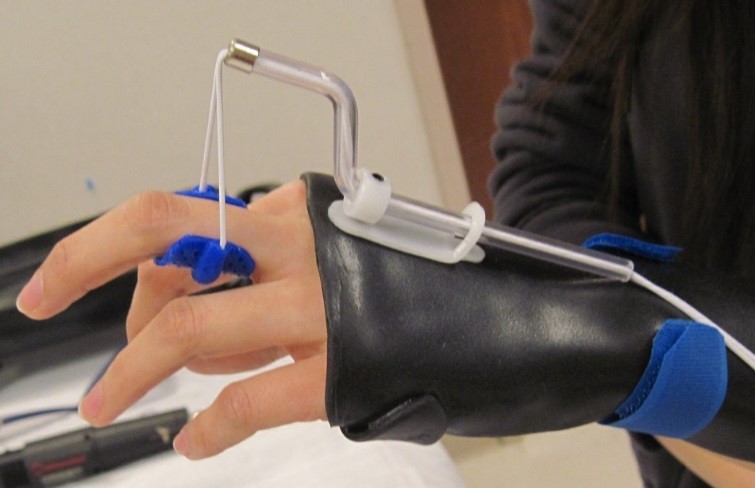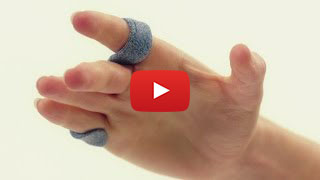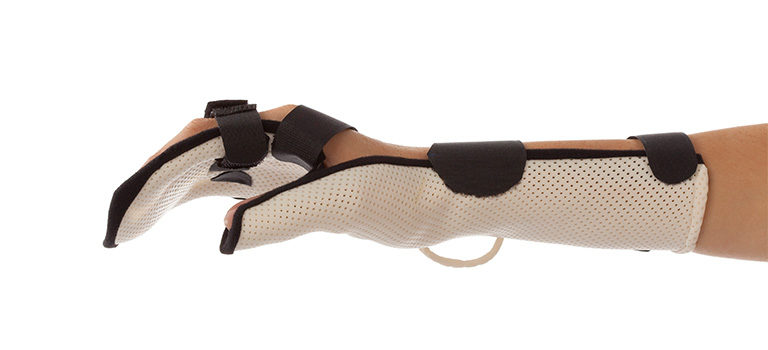
Using Orfit Thermoplastics to Manage Extensor Tendon Post-Operative Protocols
By Debby Schwartz, OTD, OTR/L, CHT - Physical Rehabilitation Product and Educational Specialist
A recent systematic review by Wong et al, in the Journal of Hand Therapy, examined the best orthosis and protocol for the management of post-operative extensor tendons in Zones IV- VIII. (Wong, A. L., Wilson, M., Girnary, S., Nojoomi, M., Acharya, S., & Paul, S. M. (2017). The optimal orthosis and motion protocol for extensor tendon injury in zones IV-VIII: A systematic review. Journal of Hand Therapy.)
The authors looked at clinical trials and cohort studies of extensor tendon rehabilitation protocols published in English between 1960 and 2016. They examined, among other things, the outcome measures of Total Active Motion (TAM), grip strength and the return to work rate.
Overall, the authors noted that the 11 studies included were of average quality with differences in reporting, outcome measures, loss of patients to follow-up and lack of randomization or blinding.
However, they were able to make some recommendations from their investigation. But first, a review.
Post-operative management of extensor tendons is typically managed by immobilization, early passive motion and/or early active motion protocols:
- Immobilization is usually done with clients wearing a cast or static orthosis which restricts motion at the wrist, MCP joints (and often IP joints), for a period of 3 weeks. This protocol protects the tendon from any tension whatsoever, but may cause tendon adhesions.
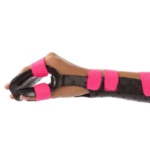
Immobilization Orthosis (Orfit Eco Black NS 3.2mm)
- Early passive motion involves controlled motion of the repaired tendon via specific exercises or more commonly via a dynamic extensor tendon orthosis. The authors note that this method is not entirely a passive method.
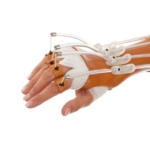
Dynamic Orthosis (Orfit Colors NS 2.0mm Gold with Dynasyst)
- Early active motion protocols allow the client to actively flex and extend the fingers and wrist while controlling tendon excursion, often using the yoke orthosis (relative motion orthosis).

Relative Motion Orthosis (Orficast 3cm Black)
The authors noted that while the specific orthosis is meant to be a “tool” in the rehabilitation process, the orthosis itself can affect the outcome regarding adherence to the protocol and movement patterns. They wanted to examine more specifically how the choice of the orthosis might influence the outcomes achieved.
Early active motion protocols appear superior to immobilization in outcomes of TAM, grip strength and return to work rates. Yet, it is unclear how to determine which clients are most suitable for this protocol.
Several studies advocate using immobilization for clients who might be poor at adhering to the protocol, which is difficult to determine in advance. Early passive and early active motion protocols with dynamic orthoses might be better at protecting the repair site and decreasing the risk of adhesions, yet the orthosis interferes greatly with activities of daily living (ADL’s). Clinicians do not generally spend a lot of time teaching clients one handed ADL’s while wearing their orthosis.
Other factors are related to costs:
1. Cost of static orthosis versus outriggers and parts of a dynamic orthosis.
2. Cost of therapy visits.
The authors note that clients with dynamic orthoses might require more post-operative visits immediately after the initiation of therapy, but clients following an immobilization protocol typically required more visits after the orthosis or cast was discharged.
The clinician must weigh all of these factors when designing the specific rehabilitation protocol and select an appropriate orthosis for the client.
The relative motion orthosis seems to be a great choice of orthosis with its low profile design and low cost. This Early Active Motion protocol, called the ICAM (Immediate controlled active motion), allows early active MCP motion and return to activities relatively quickly, often within 3 weeks. No studies of client adherence to this protocol have been performed yet.
(Details of the relative motion orthosis can be found here: Burns, M. C., Derby, B., & Neumeister, M. W. (2013). Wyndell merritt immediate controlled active motion (ICAM) protocol following extensor tendon repairs in zone IV–VII: review of literature, orthosis design, and case study—a multimedia article. Hand, 8(1), 17-22.)
In summary, the authors recommend early active motion protocols for post-operative extensor tendon management: these protocols appear to allow clients to gain motion earlier. Additional studies are needed to look at patient reported outcomes, adherence to protocol and orthotic design. Clients may need advice on management of ADL’s while wearing an orthosis.
Orfit offers thermoplastic material for any of the above orthotic designs. We suggest the following materials:
- Orfit Eco and Orfit Eco Black NS for immobilization protocols
- Orfit Colors NS and Orfilight (Orfilight, Orfilight Black NS, Orfilight Atomic Blue NS) for the dynamic extensor tendon orthosis with Orfitubes and Orfitube adjustors
- Orficast and Orficast More for the relative motion orthosis
- Orfit Colors NS and Dynasyst
- Orfilight Black NS

Orficast and Orficast More
View our instructional fabrication videos on youtube.
Dynamic Outrigger Orthosis
Relative Motion Orthosis
![]()

Written by Debby Schwartz, OTD, OTR/L, CHT
Physical Rehabilitation Product and Educational Specialist at Orfit Industries America.
Debby is a certified hand therapist with over 36 years of clinical experience. She completed her Doctorate of Occupational Therapy at Rocky Mountain University of Health Professions in 2010. She has worked at Orfit Industries America as Product and Educational Specialist since 2007.
Debby is also an adjunct professor at the Occupational Therapy Department of Touro College in NYC and has written many book chapters in the field of hand therapy and multiple articles for hand therapy journals, including the ASHT Times and the Journal of Hand Therapy. She has published a new textbook on orthotic fabrication together with Dr. Katherine Schofield, entitled “Orthotic Design and Fabrication for the Upper Extremity: A Practical Guide”.
![]()
Contact us for more product information or find your local distributor here.
![]()
If you’d like to receive the latest product updates and interesting Orfit news, subscribe to our newsletter:

